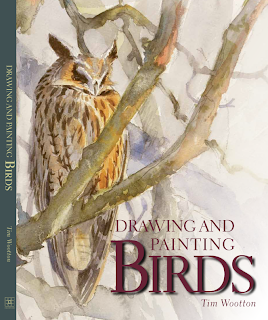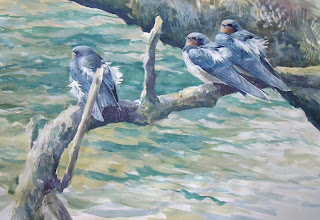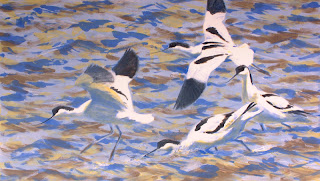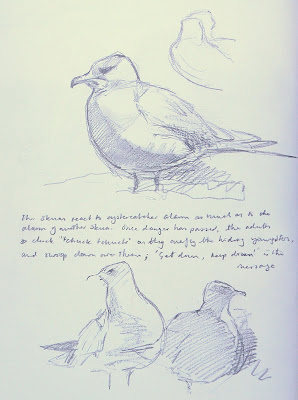STOP PRESS
Drawing & Painting Birds has now been released from the publishers. All orders will be processed as promptly as possible - weather permitting!
Thank you all for your patience.
In April 2007 I was commissioned by the Crowood Press to write and illustrate a book about the portrayal of birds. It was to be instructional as well as, hopefully, informative and inspirational. The Publisher wanted the finished manuscript ready and delivered by October that same year, with a view to a January 2008 publication. It was never going to be an easy task, particularly as the book would have to sit alongside the seminal work “Drawing Birds” by the acclaimed artist and all-round top-bloke John Busby. In addition to this inhibiting and intimidating fact were the obvious problems associated with ‘teaching’ a subject which fundamentally relies on first-hand observation and dynamic interaction between tutor and student – especially in front of the subject matter. It caused many sleepless nights and jaw-grinding hours of angst. However, three years on and “Drawing & Painting Birds” is finally to be published.
The book relies extensively on illustrations to support the ideas therein and it was whilst addressing this point that I realised that exclusive use of my own work could make for an uninteresting repetition of style. So I went cap-in-hand to fellow artists in the hope that they could help to provide images for the book. Incredibly almost everyone I contacted offered their unequivocal assistance; and although I have included many of my own drawings, paintings and diagrams, there are also over 200 illustrations by some of the foremost artists of the genre. New acquaintances were made from some existing personal heroes and old friendships cemented throughout the three years of global communication during the composition of the book.
I would like to extend my unbridled gratitude to all the artists who provided such a sumptuous collection of work – indeed enough to fill at least another three volumes – which provided both regular entertainment (and distraction from the task of writing) as the visual delights teemed through my letterbox and populated my electronic mailbox.
Therefore, although I would hope the reader finds some worth in the text, I have no doubt it will be the artwork of these wonderful people which will captivate most of all. I count myself fortunate in the extreme to have secured the help of some of the very finest practitioners of their art. I can only hope and pray that my own scribbles included among the 420-odd illustrations do not look too out of place among the many sublime works which populate the 160 printed pages.
Drawing & Painting Birds is published by The Crowood Press on December 3rd, 2010. It is available directly from them www.crowood.com and, as they say; “from all good booksellers;” Waterstone’s, Amazon, WHSmith, etc, etc.
Signed copies are also available directly from me (please see the notification on the right >)
By way of a taster, here are a few sample images from the book:







Artwork by (in no particular order);
Robert Bateman
Ed Keeble
Alan Dalton
Beth Rosenkoetter
Juan Varela
Darren Woodhead
Paul Bartlett
Andrew Ellis
Katrina Van Grouw
Charles Tunnicliffe
John Busby
Barry Van Dusen
Debby Kaspari
Bruce Pearson
Nick Derry
John Threlfall
Frank Van Boxtel
Szabi Kokay
Paschalis Dougalis
Mike Woodcock















































